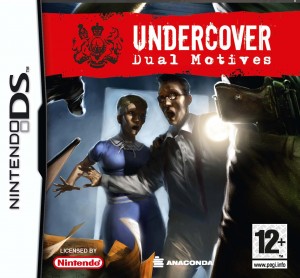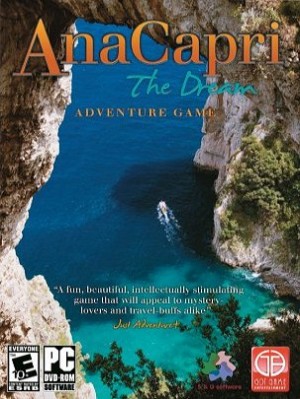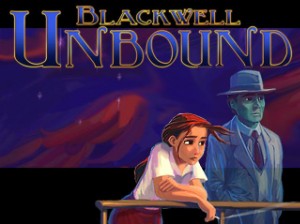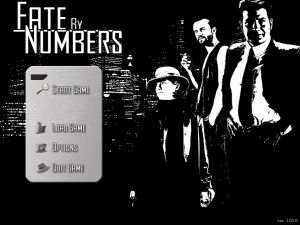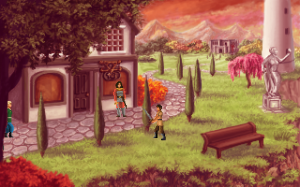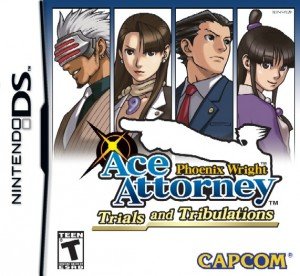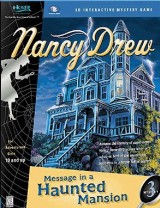Review for L.A. Noire

When Rockstar Games announced L.A. Noire nearly six years ago, many assumed it would be Grand Theft Auto set in the forties--with all of the rampant mayhem and sociopathic behaviour that implies. As details started leaking out, however, it became clear that L.A. Noire wasn't just going to be another action-oriented sandbox game with a new coat of paint. With an emphasis on solving cases using patience and wits rather than a Tommy Gun, and a revolutionary new facial animation technology powering its cutscenes and interrogations, this period epic looked like it had the potential to break new ground as an investigative mystery. Still, the cynics among us, myself included, assumed that the publisher would ultimately buckle under market pressure and choose to play it safe.
They didn't.
In an industry where adventure games have been relegated to backwater niche status, Rockstar and Australian developer Team Bondi have delivered what is essentially the most expensive and most expansive adventure game ever made. It does sprinkle some gunfights and car chases throughout its twenty-plus hour running time, but even these aren't mandatory, and L.A. Noire is at heart a game about hunting down clues, chasing leads, and extracting the truth from witnesses and suspects in tense interrogations.
Players take the role of police officer Cole Phelps, a returning war hero with a Stanford degree and a heart of gold; an honest cop in a den of corruption, determined to make the city a safer place. The LAPD, besieged by scandals and a rising crime rate, is looking for a fresh public face to put on display, and Phelps fits the bill perfectly. You'll follow Phelps as he rises from beat cop to detective, covering several different "desks", including Homicide and Vice. Each feels like its own mini-narrative, with its own police station, partner, car, and style of investigation. The game has 21 cases in all, divided up among the different desks and undertaken in a linear order. While each case is an individual investigation, it's not long before details from earlier crimes start to inform and influence later cases.
As you progress, you'll gain experience points from performing successful interrogations, surviving gunfights, and apprehending suspects. When you gain a level, you unlock new outfits for Cole, hidden vehicles strewn throughout the city, and intuition points, which can be spent to give you an edge during investigations. You can use a point to display the locations of clues on the minimap, or you can spend one to remove a wrong answer from an interrogation. One clever use of the game’s online capabilities is the option to spend a point to display the percentages of other players across the globe who selected a given answer during the investigation, similar to Who Wants to Be a Millionaire's "Ask the Audience."
The over-arching storyline is smartly-written and engrossing throughout, tying together the seemingly separate subplots in a satisfying and suitably twisting fashion. The plot hits all the expected notes of great hard-boiled noir--murder, betrayal, secrets, femme fatales, crooked cops, smooth-talking gangsters--but does so in interesting and refreshing ways. L.A. Noire consistently evokes the spirit of its inspirations while forging its own unique identity. This is not The Maltese Falcon: The Game, and Cole is not your typical Humphrey Bogart gumshoe. No noir mystery would be complete without characters who aren't what they seem, but it takes an especially deft hand to make that character development feel real. Cole's personal arc is especially involving and often surprising, forming an emotional backbone for all of the seediness and grit you'll encounter on the streets of Los Angeles.
But let's back up: just what kind of game is L.A. Noire? The short answer is, it's a little bit of everything. The game smoothly transitions from open-world driving game to slow-paced exploration and investigation to action-packed shootouts and chases. Cases generally start at the station, where your superior fills you in on the details and sends you out to the field. You walk outside and are greeted with a massive, freely-explorable, historically accurate recreation of 1947 Los Angeles. Selecting a destination from your notebook (a repository of all persons of interest, clues, and locations), you drive around the city with your current partner in tow. Here the game most closely resembles its Grand Theft Auto ancestors, from the interface to the feel of the cars, but upon arriving at your destination, you'll begin scouring crime scenes for clues and interrogating witnesses.
The clue-finding and exploration portions are pure adventure gaming, albeit through a modern lens reminiscent of last year's Heavy Rain. While the game controls like a third-person shooter, with the left stick moving Cole and the right stick aiming the camera, you won't spend much time blasting away gangsters; rather, the vast majority of the game involves slowly picking through locations for items of interest. The game nudges you in the right direction by chiming and vibrating the controller when you are near an item that can be investigated. Pressing the action button swoops the camera in over Cole's shoulder, allowing you to choose nearby items to inspect. During inspection, you can turn the object around in Cole's hands using the left stick to look for clues. Once you've found something of note--the name of a bar, a serial number, a fingerprint--the clue is automatically added to Cole's notebook and can then be used as material during interrogations.
The interrogations (in and out of the formal interrogation rooms) are perhaps the game's most interesting sequences. Whether it's a bystander, a material witness, or a full-blown suspect, everyone you talk to seems to have something to hide. Choosing a line of inquiry from Cole's notebook, you'll throw questions and allegations at your “opponent”, all while judging the honesty of their statements against their body language, facial expressions, tone of voice, and the evidence you've collected. Once they've responded, you get to choose whether you believe them, doubt them, or call them out on a lie (with evidence to back it up) in a process reminiscent of the Phoenix Wright games. Other than a few instances where the line between “doubt” and “lie” options is frustratingly blurry, or the few times when Cole's reaction is not what you expected, this system makes for a tense and engrossing game of cat-and-mouse. People walking through the room as I played the game were wont to chime in with their backseat psychologist's opinions: “Look at him squirm, he's totally lying.” “Yeah, but where's the proof?” “I don't know, this guy has military training, maybe he's just that good at lying.”
These kinds of observations are made possible by the game's innovative facial animation technology. Actors were filmed by a special rig of 32 cameras, the feeds from which were then mapped onto 3D character models. The result is a clarity of performance that is unrivaled by any other game. Every wrinkle of the forehead, every curl of the lip, every nervous glance is visible. And the game doesn’t just have great animation—it has great performances. Aaron Stanton, better known as Ken Cosgrove of TV's Mad Men shines as Cole, bringing a humanity to the character's goody-two-shoes idealism. The rest of the cast ranges from good to amazing, with bit characters just as fleshed-out as the larger roles. Standout performances include Fringe's John Noble as housing mogul Leland Monroe, Southland's Michael McGrady as Homicide detective Rusty Galloway, ER's Gil McKinney as claims inspector Jack Kelso, and Erika Heynatz as the German nightclub singer Elsa Lichtmann. You'll recognize a number of other television and film character actors sprinkled throughout the game as well. And I do mean recognize—the game truly captures each actor's performance; I'm not being hyperbolic when I say that I frequently forgot I was watching computer animation.
The rest of the game's production values are top notch as well. The graphics capture the retro-modern feel of the Los Angeles post-war boom, with only occasional pop-in in the distance or detail textures that fail to load immediately. The game scales well, with both the massive outdoor areas and intimate indoor settings full of detail. Walk up to a random pawn shop on a street corner and you'll see jewelry and guns on display inside. Drive past a diner and you'll see people coming and going, sitting down to meals, and ordering. Everywhere you go, the colors are rich, the palette carefully chosen to balance the grim nature of detective work with the brilliant flashiness of Hollywood--that is, if you choose to play the game in color. That's right, the entire game can be played in classy black-and-white for the truly noir-obsessed. It looks great both ways. My only complaints with the visuals are minor: while the facial animation is consistently astounding, bodies are noticeably less expressive, and while this is rarely a problem, it can occasionally be distracting. Also, for a game based on a film genre that took place almost exclusively at night, there is very little in the way of moody, moonlit nighttime gameplay. Most of the game takes place in the overbearing sunlight of daytime California.
The sound fits the game perfectly, from the clatter of shoes on hardwood floors to the reverberation of voices inside the vaulted lobby of the Los Angeles Hall of Records. The voice work is consistently believable and entertaining, except from random pedestrians, who sound either profoundly bored or overly excited to be walking past Phelps. The soundtrack by composer Andrew Hale deserves special note, serving to cement the noir atmosphere with its sultry saxophones during the intro, its blaring horns and urgent cellos during car chases, and its slow, patient piano during investigations. The car radio occasionally plays period jazz, blues, bebop, and even commercials, which helps sell the historical accuracy of the game.
This focus on authenticity goes a long way. While the game may skew slightly more towards film noir-logic than real police work, with its LAPD officers encountering multiple shootouts and chases in a day's work, it also goes to great lengths to immerse you in its world. The city is an astonishingly accurate recreation of the real thing, with landmarks big and small given equal attention. You'll navigate using real street names and grow to learn the lay of the town. Most buildings are closed off, but quite a few have fully-modelled interiors that can be entered and explored, even buildings that will never come into play in the main story. Some details you'll never see unless you go searching for them--I played through the entire game unaware that there was a full recreation of the L.A. County Art Museum, and wouldn't have found out had I not watched a friend wander inside. Many of the cases are based on actual crimes that took place in ‘40s Los Angeles, and major figures in the organized crime scene of the period such as Mickey Cohen and Bugsy Siegel play a role in the game. Perhaps the most famous unsolved crime in California history, the Black Dahlia murder, comes into play as well in spectacularly creepy fashion.
Not only are the cases often based on true crime, they also demonstrate the commitment to realism on the part of Team Bondi. Whether you're deducing a certain weave of rope used as a murder weapon based on the burn markings on a victim's neck or reconstructing the chain of events leading up to a water heater explosion, the cases feel genuine and the outcomes plausible. An amusing anecdote: I have a friend whose father is a firefighter with experience working arson investigations--while my friend was investigating a possible arson in the game, exploring a burned-out house, his dad walked through the room and watched him play for a minute or so. Within seconds, he pointed to part of the house and said "that was the flashpoint." My friend then went and investigated the area, only to have Cole say "this must have been the flashpoint."
While the game is a linear narrative at its core, there is a lot of wiggle room within the plot. Many cases have multiple possible outcomes and in a particular stroke of brilliance, you cannot “fail” interrogations in the traditional gaming sense. Even if you get every question wrong, your punishment is to have to carry on the investigation without whatever clues or facts you might have gleaned from that person. In fact, many cases are so open-ended that you can, through malice or ignorance, charge the wrong person. The game won't stop you, though your post-mission rating will drop, and you'll get a nice chewing-out from your boss. While the ending isn't going to change based on those outcomes, it gives you a sense of responsibility for getting the case right.
Now to the elephant in the room for many adventure gamers. Yes, L.A. Noire is an action-adventure game. The game does contain driving and shooting segments that are much more in line with Rockstar's past work than with, say, Police Quest. For those who have no aversion to action sequences--good news! They're good! While it won’t dethrone Gears of War with its cover-based third-person shooting, L.A. Noire keeps the gunfights punchy and intense. Cole can't take more than a few shots before going down, and the same goes for the people on the receiving end of his .45. Many times you'll only be up against two or three shooters (during a bank robbery, for example), so the fight is over within the space of a minute or two. Often action games numb you to the act of killing through repetition, but as only a fraction of this game is spent with guns-ablazing--out of my total game time, I spent around three hours in shootouts--each gunfight stands out.
Car and foot chases are more common, but are equally enjoyable. When a suspect takes to his car, Cole and his partner will leap into their vehicle and take chase. You can pull up alongside the car and let your partner take pot shots at the bad guy's tires, or you can try to bank into his wheel wells and spin him out. The chases are a joy to play through, especially since the car handling and physics are rock-solid, which was to be expected considering Rockstar's extensive history with driving games. If your suspect opts to run on foot, you'll have to maneuver Cole around cars, over fences, up ladders, and even leap from building to building in pursuit. The controls are very simple--you essentially steer Cole in the right direction and he does all the climbing and running automatically. Both kinds of chases are exciting and fun, and despite their prevalence, I never got bored of them.
For those of you who prefer to keep your gun holstered, fear not: the game allows you to skip action sequences after you have failed them a few times, leaving only the adventuring. This might lead to a few jarring transitions between the beginning of a shootout and its dramatic aftermath, but otherwise you'll still experience the bulk of the narrative. Combined with the ability to have your partner do all the driving for you during normal driving portions of the game, this means you have the option to pass on pretty much anything that requires reflexes if that isn't your thing. Also, the majority of the action is relegated to "street crimes," which are essentially side quests that crop up randomly as you drive around town, and these are entirely optional (though they do reward you with experience, which leads to levelling up, which leads to intuition points and new costumes). If you don't feel like driving to a burglary in progress, leave it to the beat cops and go on your merry way.
If you have the choice between the Xbox 360 and PlayStation 3 versions of the game, the PS3 wins out slightly. While the game is incredible on both consoles, I noticed during my time with the 360 version that the lighting was flatter and there was more framerate slowdown than on the PS3. Also, while the PlayStation version ships on a single Blu-ray disc, the Xbox version comes on three discs, divided across the different desks. Disc-swapping is kept to a minimum, but it's still an annoyance that PS3 owners don't have to deal with. Again, though, Xbox 360 owners are hardly getting short-changed--the game is otherwise identical and just as enjoyable on either platform.
I was cautiously optimistic about L.A. Noire, and that optimism has been vindicated while my caution proved completely unfounded. For a publisher as large as Rockstar to bankroll a game as expensive, shamelessly slow-paced, and intellectual as this; one that eschews the rampant carnage of its predecessors and plays on an old niche film genre that has long fallen into cult status... it honestly seems unbelievable. Only in my film- and adventure game-geek dreams would millions of dollars and over seven years of development time go into a game that is truly an interactive film noir classic, one that easily equals the best the genre has ever had to offer.
As an interactive movie, L.A. Noire stakes its claim as the best-written, best-acted, and most expansive of any I've ever seen. Unlike Heavy Rain, it even sticks the landing, remaining satisfying throughout its duration and holding up under repeat playthroughs. As an action game, it imbues otherwise standard gunfights and car chases with an urgency and intensity missing from many of its hyperactive, Michael Bay-esque brethren by providing context and consequences for the violence. As a period piece, it fleshes out its setting with an insane amount of detail and a plethora of clever touches that put you squarely in the 1940s homicide dick mindset. And as an adventure game, it breaks new ground by forcing you to think in new ways--cases are best approached like a real detective rather than a pack-rat adventure gamer trying to out-guess the designers. Whatever you call it, L.A. Noire is a monumental achievement that every console-owning adventure fan needs to experience.
WHERE CAN I DOWNLOAD L.A. Noire
L.A. Noire is available at:
We get a small commission from any game you buy through these links (except Steam).Our Verdict:
A rewarding adventure, a richly detailed world, an intriguing mystery, and a fascinating character study all in one—L.A. Noire is truly something special.



_capsule_fog__medium.png)







